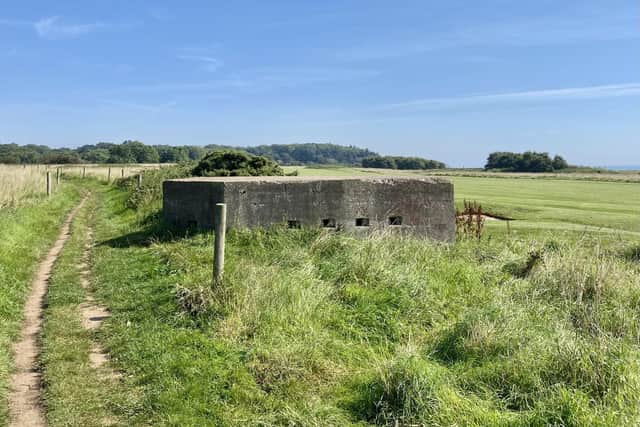Flamborough pillboxes: The history behind the Second World War pillboxes scattered along Yorkshire's coast
The concept is said to have been based on a design used by the German army on the Western Front in the 1914-18 conflict.
Although many have since disappeared because of coastal erosion, over 6,000 still survive and several of these remain above the chalk cliffs of Flamborough Head.
Advertisement
Hide AdAdvertisement
Hide AdAfter Dunkirk, the War Office’s Directorate of Fortifications and Works had devised what was known as the Coastal Crust defence plan, led by General Edmund Ironside, Commander in Chief of Home Forces.


The defences it implemented included anti-tank and landing-craft obstacles on beaches and pillboxes sited further back.
This network began on the estuary of the River Forth near Edinburgh, and extended down the east coast and along the south coast to Cornwall.
Some of the pillboxes sited at Flamborough were known as “lozenges” and were hexagonal in shape. Others were round or square.
Advertisement
Hide AdAdvertisement
Hide AdThe design was compared to pre-war containers to store medical pills, hence the term “pillbox”.
Each could accommodate a permanent watch of up to eight soldiers, although it is thought likely that Flamborough’s were occupied by Bren light machine gun teams numbering three.
Although the cliffs would have acted as a natural deterrent it was feared the promontory’s small bays might have been targeted by small sabotage parties.
The walls were designed to be bullet-proof and shell-proof, and the entrances had simple walls to protect the inhabitants from blasts.
The interior was cramped and spartan, there being no attempt to provide living accommodation or even a few home comforts for soldiers, who occupied the pillboxes on rotating shifts.
Comment Guidelines
National World encourages reader discussion on our stories. User feedback, insights and back-and-forth exchanges add a rich layer of context to reporting. Please review our Community Guidelines before commenting.